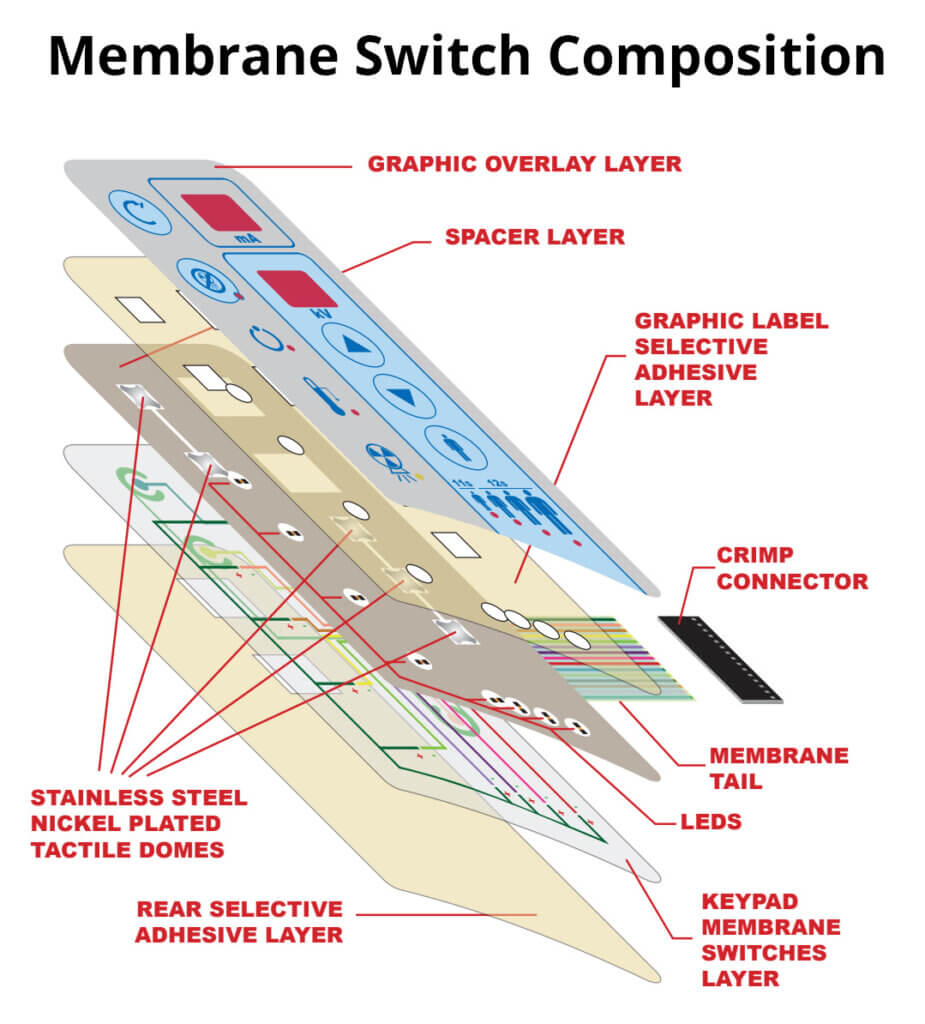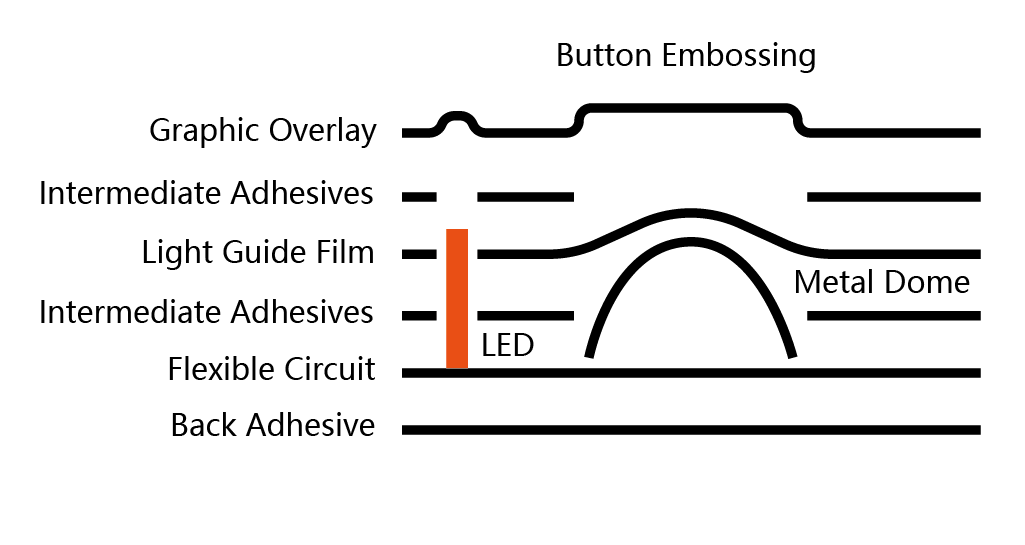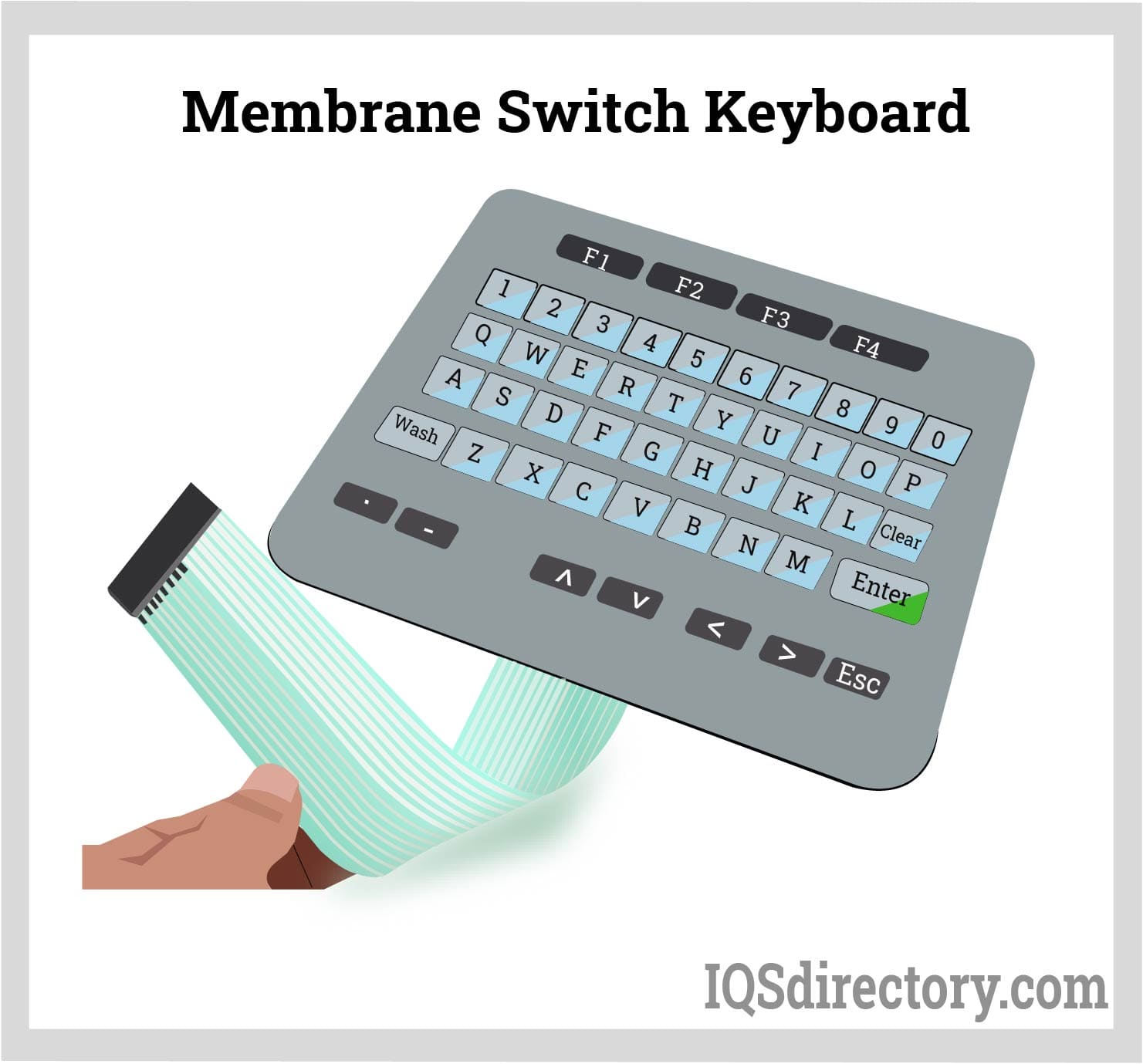The Manufacturing Refine Behind Membrane Switch Over: What You Need to Know
The production procedure behind membrane switches over combines cautious layout, material option, and quality assurance. It starts with comprehending the intricacies of membrane layer button style and proceeds with numerous stages, consisting of material options and printing strategies. Each phase plays an essential function in making certain performance and longevity. The complexities of layer building and construction and the rigorous testing requirements might reveal insights that are not promptly noticeable. What lies beyond these fundamental components?
Understanding Membrane Change Style
Membrane buttons might show up straightforward at initial look, their design involves elaborate considerations that ensure performance and longevity. The design process begins with an extensive understanding of user demands, including the interface's desired application and ecological variables. Comfort designs is a crucial element, as the layout must facilitate convenience of usage while making certain that responsive comments satisfies individual expectations.Moreover, the layering of components, such as graphic overlays, glue layers, and conductive traces, have to be specifically crafted. membrane switch. This layered configuration not only affects the button's responsiveness however also impacts its long life. Interest is offered to the sealing techniques used to secure against moisture and dirt, which might compromise performance. In addition, style considerations include aesthetics, where shade plans and visual quality improve user experience. Inevitably, the style of membrane switches balances performance, individual experience, and resilience, guaranteeing that they meet the needs of numerous applications effectively
Products Utilized in Membrane Layer Change Manufacturing
When choosing materials for membrane layer switch production, it is important to contemplate both efficiency and resilience. The key materials consist of polyester and polycarbonate films, which give flexibility and strength. These movies are often covered with adhesive to ensure correct bonding to substrates. Conductive inks, commonly composed of silver or carbon, are essential for producing electric connections within the switch, permitting reputable operation.Additionally, a safety layer, such as a hard coat, is regularly applied to improve scrape resistance and longevity. The choice of backing product, such as acrylic or foam, can substantially impact the switch's responsive feeling and overall individual experience. Various ecological aspects, consisting of temperature level and humidity, should direct product choice to assure peak efficiency in specific applications. Ultimately, the best combination of products adds to the membrane layer button's capability and life-span, making educated selections important for producers.
The Printing Process: Creating Graphics and Text
The printing process in membrane switch manufacturing plays a significant role in producing premium graphics and text. Various graphic design techniques are employed to guarantee aesthetic allure and capability, while mindful ink choice techniques are necessary for toughness and efficiency. Comprehending these aspects is fundamental for achieving best outcomes in membrane layer switch design.
Graphic Style Techniques
Graphic design strategies play a crucial function in the printing process of membrane layer switches, as they define exactly how graphics and text will ultimately show up on the final product. Reliable graphic style involves the calculated use shades, font styles, and layouts to enhance readability and aesthetic appeal. Developers frequently make use of vector graphics for scalability, guaranteeing that photos stay sharp at numerous sizes. In addition, attention to comparison and placement is important, as it affects user communication and visual high quality. The unification of branding elements, such as logos, have to be handled with treatment to keep brand stability. On the whole, thoughtful graphic style strategies contribute significantly to the capability and attractiveness of membrane buttons, influencing user experience and product performance.
Ink Option Approaches
Selecting the suitable ink is crucial for achieving the preferred aesthetic top quality and sturdiness in membrane layer button manufacturing. Numerous ink kinds are used, consisting of solvent-based, water-based, and UV-curable inks. Each kind offers unique attributes, such as resistance, versatility, and bond to ecological aspects. Solvent-based inks are usually preferred for their longevity and vibrant shades, while water-based inks are more eco-friendly yet might have constraints in attachment. UV-curable inks supply fast treating and robust performance. Additionally, shade matching strategies assure that the chosen inks line up with style specifications. Ultimately, the selection of ink have to take into consideration aspects such as application technique, substrate compatibility, and end-use requirements to attain premium cause membrane switch graphics and message.
Layer Building and Assembly

Product Option Process
A careful selection of materials is vital visit the website in the production procedure of membrane layer buttons, as it straight affects capability and durability. The primary materials used include polyester, polycarbonate, and various conductive inks. Polyester is frequently favored for its outstanding resistance to chemicals and abrasion, making it appropriate for severe atmospheres. Polycarbonate, on the other hand, offers exceptional clarity and impact resistance, which is advantageous for applications requiring visibility and robustness. Conductive inks, generally composed of silver or carbon, are vital for developing trusted electric paths. Furthermore, the choice of adhesive products influences the general stability of the switch - membrane switch. Evaluating variables such as ecological exposure, tactile responses, and visual demands guides suppliers in picking the most effective materials for their specific applications
Layer Attachment Methods
Adhering layers in membrane layer button construction is a vital procedure that guarantees functionality and long life. Various attachment methods are employed to safeguard suitable bonding between layers, which commonly consist of making use of adhesives, warm, and stress. Pressure-sensitive adhesives (PSAs) are frequently utilized for their convenience of application and instant bonding capacities. Furthermore, thermal bonding techniques can be used, where heat is utilized to activate sticky homes, safeguarding a strong bond. The selection of bond approach mostly relies on the materials included and the specific application demands of the membrane layer switch. Appropriate alignment and uniform you can look here application of adhesives are important to avoid issues, securing the button runs effectively throughout its designated life-span.
Quality Control Procedures
Guaranteeing high quality control during the layer building and construction and assembly of membrane switches is crucial for maintaining performance and dependability. This procedure typically includes a number of critical steps, including detailed evaluations at each stage of manufacturing. Suppliers make use of advanced testing techniques, such as peel tests and bond evaluations, to validate the honesty of layer bonds. In addition, visual inspections are conducted to identify any type of problems in printing or material variances. Environmental problems, such as temperature and moisture, are very carefully checked to guarantee suitable treating and attachment. Moreover, routine calibration of devices aids maintain accurate manufacturing standards. By executing these quality assurance steps, producers can significantly reduce the risk of item failing, ensuring that the final membrane layer switches over satisfy the required specifications and consumer assumptions.
Evaluating and Quality Control Actions

Advancements in Membrane Switch Over Modern Technology
As developments in technology remain to progress, membrane buttons are benefiting from innovative growths that enhance their capability and individual experience. One notable technology is the combination of capacitive touch technology, which enables more receptive and user-friendly interface. This shift not just enhances visual appeals yet also lowers mechanical deterioration, expanding the lifespan of the switches.Additionally, innovations in graphic overlay products have caused boosted sturdiness and resistance to ecological elements such as dampness and UV light. These materials now supply enhanced clearness and illumination, further boosting the aesthetic appeal.Furthermore, the incorporation of clever technology is transforming membrane layer switches over into interactive control panels, making it possible for connectivity with IoT gadgets. This connectivity cultivates a smooth customer experience, paving the method for applications in numerous industries, from healthcare to customer electronic devices. Jointly, these developments setting membrane layer switches over as crucial elements in modern-day tool design.
Frequently Asked Concerns
How much time Does the Membrane Layer Switch Over Manufacturing Process Take?
The duration of the membrane switch manufacturing process can vary significantly. Aspects such as intricacy, products made use of, and manufacturing quantity impact timelines, with typical production varying from a couple of days to several weeks for completion.
What Are the Common Applications for Membrane Layer Buttons?
Membrane layer buttons are generally made use of in numerous sectors, consisting of auto controls, house devices, clinical tools, and customer electronics (membrane switch). Their adaptability and toughness make them suitable for applications needing easy to use interfaces and reputable performance in diverse settings
Can Membrane Layer Changes Be Personalized for Particular Needs?

What Is the Life expectancy of a Regular Membrane Layer Switch Over?
The lifespan of a typical membrane button differs, however typically, it ranges from 1 to 5 million cycles. Variables such as usage, environment, and worldly quality considerably affect longevity and overall performance over time.

Are Membrane Layer Changes Eco-friendly?
The environmental friendliness of membrane switches Visit Website over differs. Some products utilized may not be recyclable, while others can be environmentally friendly. The overall impact relies on making materials and techniques, demanding cautious consideration during option and disposal. The production process behind membrane layer switches over combines cautious design, product choice, and quality control. It starts with recognizing the ins and outs of membrane button style and progresses via different stages, consisting of material selections and printing methods. When selecting products for membrane button manufacturing, it is essential to ponder both performance and durability. A mindful selection of products is vital in the manufacturing procedure of membrane buttons, as it straight influences capability and toughness. The choice of attachment method mainly depends on the materials included and the specific application needs of the membrane switch.